The ravages of time
IR spectroscopy investigates aging of a polymer bag
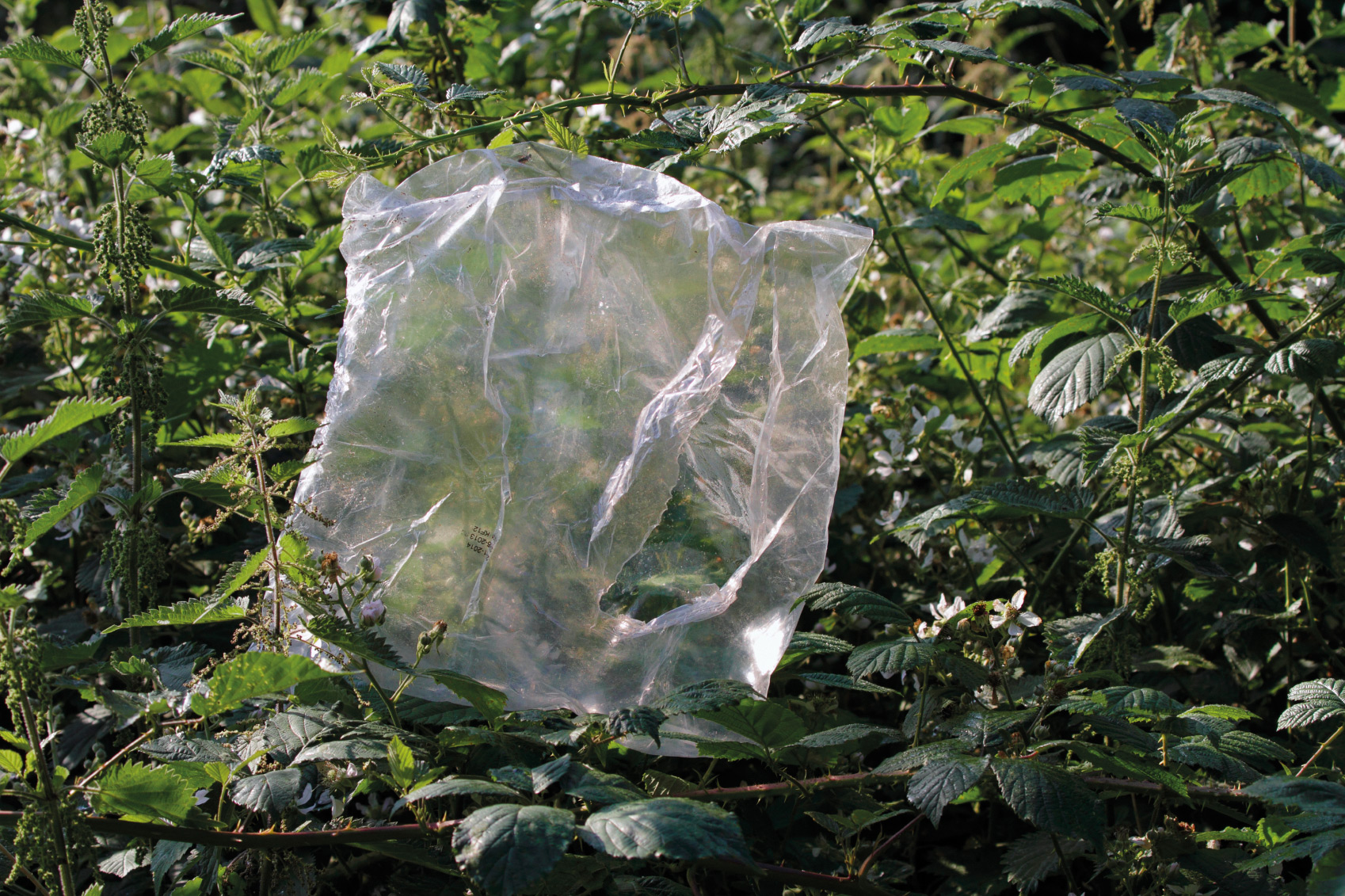
For 15 years, it modestly wrapped objects in the household. It had a place in the sun near a window with a view. But then, all of a sudden, the plastic bag disintegrated into dust. At first into small parts, which upon further touching fell apart into even smaller bits. The bag had acquired a ‘fractal’ life.
What has happened?
Solar radiation triggered oxidation of the polymer, as has been described frequently in the literature. To verify this assertion, fragments of the aged plastic bag were investigated non-destructively using infrared spectroscopy (IR) and the ATR measuring technique (Figure 1). In the present case, a diamond ATR unit was selected. As oxidation is a surface phenomenon, the ATR method is highly suitable. Depending on wavenumber, optical element and window, the penetration depth is about 2 µm (at 1,000 cm-1) into the surface.
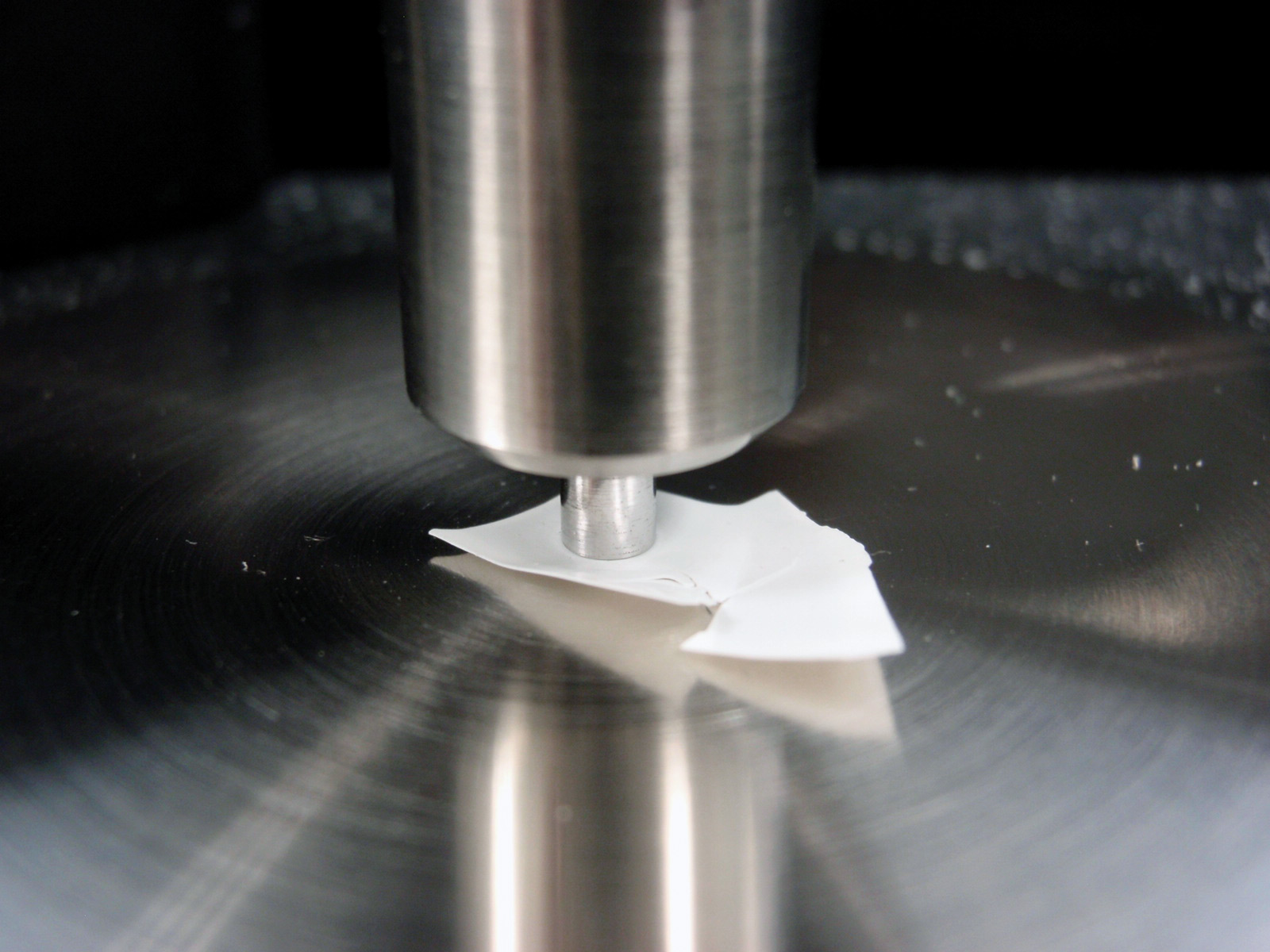 Figure 1: The pressure rod of the DuraSamplIR pushes a disintegrated piece of the plastic bag against the diamond prism
Figure 1: The pressure rod of the DuraSamplIR pushes a disintegrated piece of the plastic bag against the diamond prism
Theory
During polyethylene oxidation, hydroxyl, carbonyl and vinyl groups are formed from the long-chain -[-CH2-CH2-]n- The polymer chain shortens and becomes more brittle, leading to disintegration of the material after sufficient conversion or progressing of oxidation.
Polyethylene inherently evokes an infrared spectrum that has very few bands. Three significant vibrational ranges leave room for IR windows, one of which is located in the so-called ‘fingerprint’ region. This is why polyethylene is also used as carrier material for other highly viscous substances (e.g. oils) in order to measure their infrared spectra.
As already mentioned, polyethylene exhibits a simple IR spectrum. The polyethylene spectrum becomes more ‘interesting’ when aggregants are intended to influence its target characteristics. In this case, vibrational bands enhance the absorptions in the IR window. During oxidation of polyethylene, carboxylic acid derivatives are formed, with CO vibrations which are strongly infrared active. Small amounts already generate strong absorptions in the infrared spectrum at 1,700 – 1,750 cm-1.
Measurements
To generate a reference spectrum, a commercial polyethylene (PE) white plastic bag without print was measured. This bag serves as ‘fresh’ polyethylene at the defined time ‘zero.’ The spectrum is free from CO vibrations originating from the group of carboxylic acids.
Inner as well as outer surfaces of aged plastic bag samples were examined (Figure 2). The samples originate from the white parts of the bag which have been exposed to the sun. In this way, it was possible to compare the aged foil to the fresh foil without any distortion of the results due to colored prints and polymer layers containing other substances.
Figure 2 shows the infrared spectra for comparison between fresh and aged foil. In the fingerprint region (1,000 – 1,400 cm-1) the foils differ fundamentally from one another according to different admixtures or fillers. The infrared vibrations of polycarbonate and acrylate do not correspond to the triplet structure in the range of 1,200 – 1,050 cm-1.
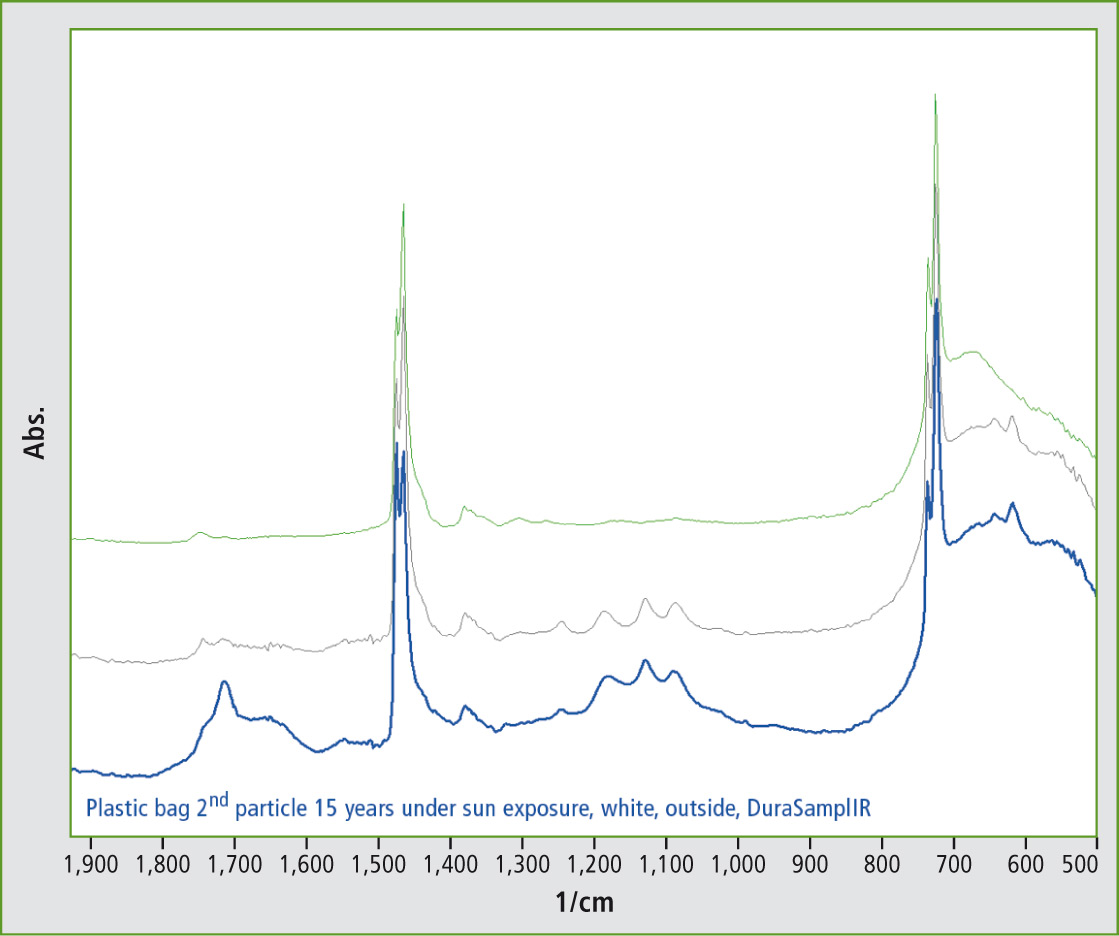 Figure 2: Infrared spectra of various polyethylene samples. The green line represents the ‘fresh’ polyethylene and the grey (inner surface) and blue (outer surface) lines represent the aged material
Figure 2: Infrared spectra of various polyethylene samples. The green line represents the ‘fresh’ polyethylene and the grey (inner surface) and blue (outer surface) lines represent the aged material
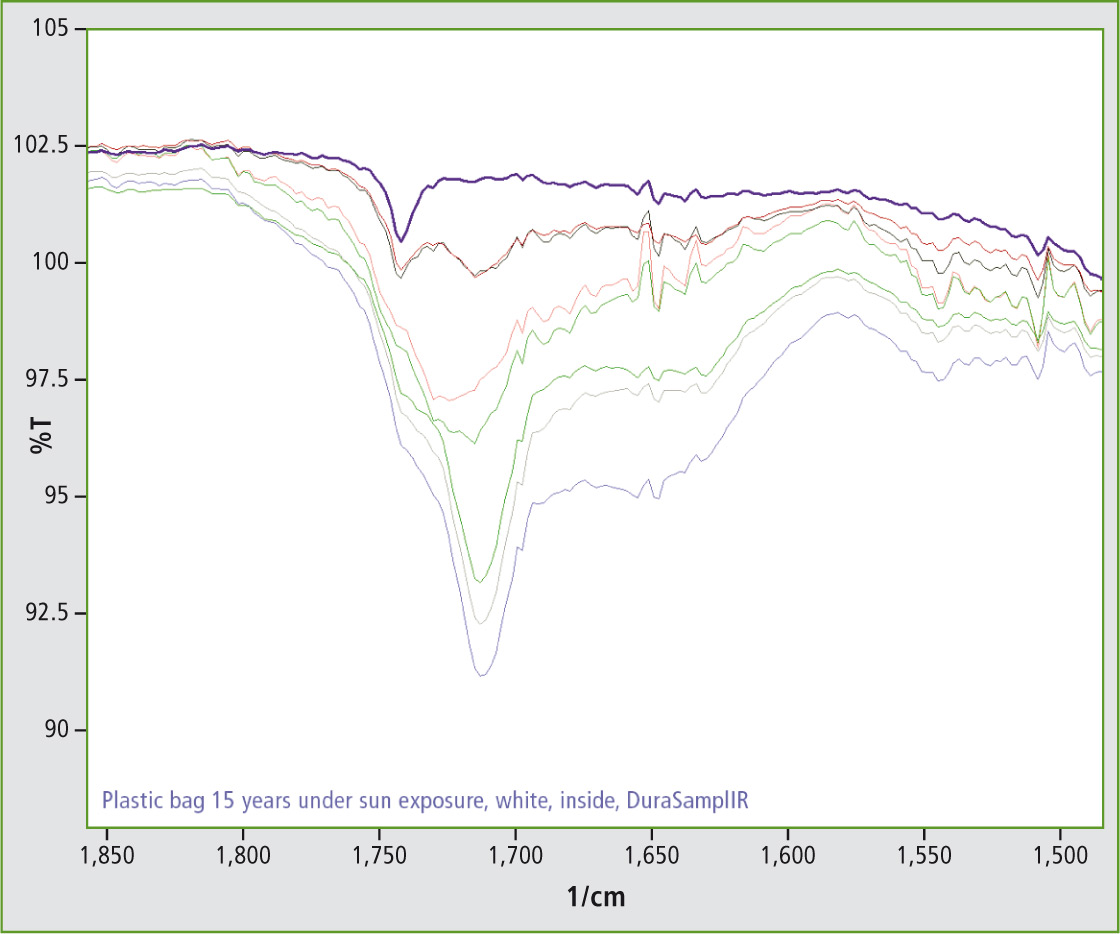 Figure 3: Representation of eight infrared spectra from four samples. The dark blue to bright red spectra represent the inner surface and the green to blue spectra represent the outer surface.
Figure 3: Representation of eight infrared spectra from four samples. The dark blue to bright red spectra represent the inner surface and the green to blue spectra represent the outer surface.
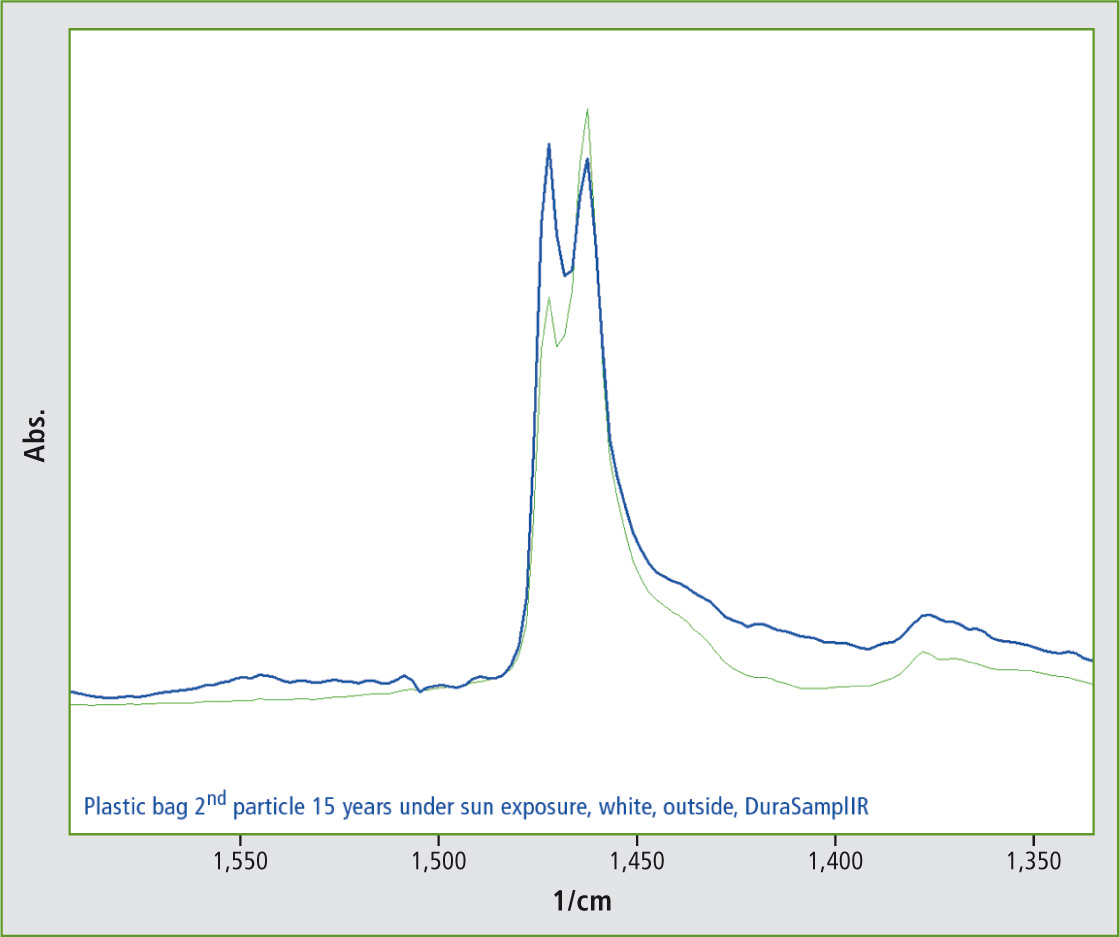 Figure 4: CH2-vibrations in the range of 1,400 – 1,500 cm-1. Green represents the ‘fresh’ foil while blue represents the aged (outer surface) foil.
Figure 4: CH2-vibrations in the range of 1,400 – 1,500 cm-1. Green represents the ‘fresh’ foil while blue represents the aged (outer surface) foil.
Detailed clarification of which of the vibrations in the fingerprint region are due to the aging process would be necessary. The carboxylic acid vibrations represent a simple range to detect aging. In addition, the aged foil – inner and outer surface – can now be compared. The signal at 1,710 cm-1 is clearly recognizable, arising from the carboxylic acid group. The presence of this vibration points to the aging process.